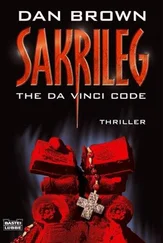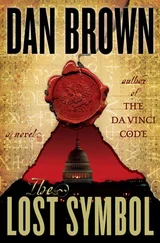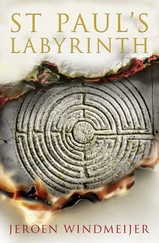Langdon had always believed that this dubious honor belonged to the Ghent Altarpiece and paid a quick visit to the ARCA Web site to confirm his theory. The Association for Research into Crimes Against Art offered no definitive ranking, but they did offer a concise history of the sculptures’ troubled life as a target of pillage and plunder.
The four copper horses had been cast in the fourth century by an unknown Greek sculptor on the island of Chios, where they remained until Theodosius II whisked them off to Constantinople for display at the Hippodrome. Then, during the Fourth Crusade, when Venetian forces sacked Constantinople, the ruling doge demanded the four precious statues be transported via ship all the way back to Venice, a nearly impossible feat because of their size and weight. The horses arrived in Venice in 1254, and were installed in front of the facade of St. Mark’s Cathedral.
More than half a millennium later, in 1797, Napoleon conquered Venice and took the horses for himself. They were transported to Paris and prominently displayed atop the Arc de Triomphe. Finally, in 1815, following Napoleon’s defeat at Waterloo and his exile, the horses were winched down from the Arc de Triomphe and shipped on a barge back to Venice, where they were reinstalled on the front balcony of St. Mark’s Basilica.
Although Langdon had been fairly familiar with the history of the horses, the ARCA site contained a passage that startled him.
The decorative collars were added to the horses’ necks in 1204 by the Venetians to conceal where the heads had been severed to facilitate their transportation by ship from Constantinople to Venice.
The doge ordered the heads cut off the Horses of St. Mark’s? It seemed unthinkable to Langdon.
“Robert?!” Sienna’s voice was calling.
Langdon emerged from his thoughts, turning to see Sienna pushing her way through the crowd with Ferris close at her side.
“The horses in the poem!” Langdon shouted excitedly. “I figured it out!”
“What?” Sienna looked confused.
“We’re looking for a treacherous doge who severed the heads from horses!”
“Yes?”
“The poem isn’t referring to live horses.” Langdon pointed high on the facade of St. Mark’s, where a shaft of bright sun was illuminating the four copper statues. “It’s referring to those horses!”
On board The Mendacium , Dr. Elizabeth Sinskey’s hands were trembling. She watched the video in the provost’s study, and although she had seen some terrifying things in her life, this inexplicable movie that Bertrand Zobrist had made before his suicide left her feeling as cold as death.
On the screen before her, the shadow of a beaked face wavered, projected on the dripping wall of an underground cavern. The silhouette continued speaking, proudly describing his masterpiece — the creation called Inferno — which would save the world by culling the population.
God save us , Sinskey thought. “We must …” she said, her voice quavering. “We must find that underground location. It may not be too late.”
“Keep watching,” the provost replied. “It gets stranger.”
Suddenly the shadow of the mask grew larger on the wet wall, looming hugely before her, until a figure stepped suddenly into the frame.
Holy shit.
Sinskey was staring at a fully outfitted plague doctor — complete with the black cloak and chilling beaked mask. The plague doctor was walking directly toward the camera, his mask filling the entire screen to terrifying effect.
“ ‘The darkest places in hell,’ ” he whispered, “ ‘are reserved for those who maintain their neutrality in times of moral crisis.’ ”
Sinskey felt goose bumps on her neck. It was the same quotation that Zobrist had left for her at the airline counter when she had eluded him in New York a year ago.
“I know,” the plague doctor continued, “that there are those who call me monster.” He paused, and Sinskey sensed his words were directed at her. “I know there are those who think me a heartless beast who hides behind a mask.” He paused again, stepping closer still to the camera. “But I am not faceless. Nor am I heartless.”
With that, Zobrist pulled off his mask and lowered the hood of his cloak — his face laid bare. Sinskey stiffened, staring into the familiar green eyes she had last seen in the darkness of the CFR. His eyes in the video had the same passion and fire, but there was something else in them now — the wild zeal of a madman.
“My name is Bertrand Zobrist,” he said, staring into the camera. “And this is my face, unveiled and naked for the world to see. As for my soul … if I could hold aloft my flaming heart, as did Dante’s Lord for his beloved Beatrice, you would see I am overflowing with love. The deepest kind of love. For all of you. And, above all, for one of you.”
Zobrist stepped closer still, gazing deep into the camera and speaking softly, as if to a lover.
“My love,” he whispered, “my precious love. You are my beatitude, my destroyer of all vices, my endorser of all virtue, my salvation. You are the one who lay naked at my side and unwittingly helped me across the abyss, giving me the strength to do what I now have done.”
Sinskey listened with repulsion.
“My love,” Zobrist continued in a doleful whisper that echoed in the ghostly subterranean cavern in which he spoke. “You are my inspiration and my guide, my Virgil and my Beatrice all in one, and this masterpiece is as much yours as it is mine. If you and I, as star-crossed lovers, never touch again, I shall find my peace in knowing that I have left the future in your gentle hands. My work below is done. And now the hour has come for me to climb again to the world above … and rebehold the stars.”
Zobrist stopped talking, and the word stars echoed a moment in the cavern. Then, very calmly, Zobrist reached out and touched the camera, ending his transmission.
The screen went black.
“The underground location,” the provost said, turning off the monitor. “We don’t recognize it. Do you?”
Sinskey shook her head. I’ve never seen anything like it. She thought of Robert Langdon, wondering if he had made any more headway in deciphering Zobrist’s clues.
“If it’s of any help,” the provost said, “I believe I know who Zobrist’s lover is.” He paused. “An individual code-named FS-2080.”
Sinskey jumped up. “FS-2080?!” She stared at the provost in shock.
The provost looked equally startled. “That means something to you?”
Sinskey gave an incredulous nod. “It most certainly does.”
Sinskey’s heart was pounding. FS-2080 . While she didn’t know the identity of the individual, she certainly knew what the code name stood for. The WHO had been monitoring similar code names for years.
“The Transhumanist movement,” she said. “Are you familiar with it?”
The provost shook his head.
“In the simplest terms,” Sinskey explained, “Transhumanism is a philosophy stating that humans should use all available technologies to engineer our own species to make it stronger. Survival of the fittest.”
The provost shrugged as if unmoved.
“Generally speaking,” she continued, “the Transhumanist movement is made up of responsible individuals — ethically accountable scientists, futurists, visionaries — but, as in many movements, there exists a small but militant faction that believes the movement is not moving fast enough. They are apocalyptic thinkers who believe the end is coming and that someone needs to take drastic action to save the future of the species.”
“And I’m guessing,” the provost said, “that Bertrand Zobrist was one of these people?”
Читать дальше
Конец ознакомительного отрывка
Купить книгу










